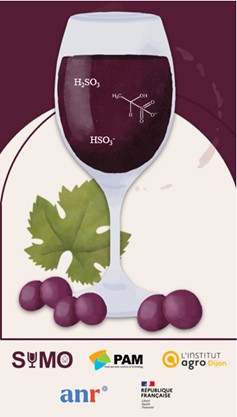
Sulfites are widely used as preservatives in wine because of their antimicrobial, antioxidant and antioxidase properties. However, since 2008, European regulation CE 1333/2008 has made it mandatory to indicate their presence on the label as soon as their concentration exceeds 10 mg∙L-1 because of their allergenic effects. Furthermore, in 2009, CE 606/2009 regulation adjusted the maximum SO2 limits in order to encourage more natural wine-making practices.
These regulations and this trend towards reducing sulfites are raising questions among professionals about the method for quantifying them. Conventional quantification methods have margins of error of up to 10 mg∙L-1 and are often time-consuming and complex to implement.
The aim of the SUMO project is to develop a sensor for rapid and reliable monitoring of sulfites in wine, with a view to adjusting doses to the strict minimum and reducing inputs.
The challenge is to develop a quantification method that is simple, fast, accurate, portable, inexpensive and part of a greener chemistry than the methods traditionally used by professionals, such as the Ripper and Franz-Paul methods.
The sensor developed in this project is aimed at winegrowers and oenologists who want to monitor sulfites throughout the production process, enabling them to better control the stability of their wines while reducing the use of additives.






